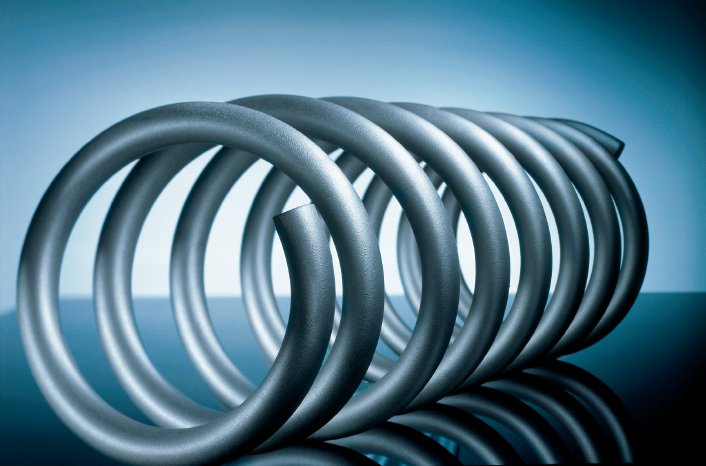The use of hazardous substances in surface coatings is regulated by various legal regulations. As of July 1, 2007, when the EU End-of-life Vehicle Regulation comes into force, corrosion protection for vehicle components must no longer contain any chromate or chromate-based compounds. This has led to a series of new and modified solutions based on chromic compounds or completely chrome-free passivations, and the same applies for light metals such as aluminium and magnesium alloys. In some cases, these procedures offer better corrosion protection than the previous chromate-based systems. However, in addition to higher processing costs, they also require significantly more intensive process monitoring.
Chromate-free coating systems are already available both for zinc lamella coatings and for corrosion protection through classic galvanising technology. On the one hand, these new systems are based on continuously optimised and newly developed electrolytes, and, on the other hand, on developments in thin and thick layer passivations. Corrosion protection can be optimised through organic or silica-based sealing, that is, the use of so-called top coats. The process of coating zinc or zinc alloys with passivations is frequently used to achieve reliable corrosion protection. For connection pieces that have to be highly corrosion-resistant, a combination of three coatings on top of one another is used: First, a cyanide-free zinc-iron alloy process, then black chromatisation for electroplated zinc-iron alloy layers on a chromic base, and finally a transparent, inorganic top coat based on silicone and titanium. There is also a trend towards duplex coatings. With this procedure, parts are coated with a surface of zinc or zinc alloy and a cathodic immersion paint (black top coat). To retain the protective effect even at extreme temperatures, such as in the engine compartment and around the brakes, many of the new chromate-free corrosion protection systems have a very high thermal resistance. Development in this area leads to a continuous string of innovations, such as the use of nano-particles.
Chemical nickel – Heavy metal-free surfaces with customised properties
Chemical nickel plating is distinguished by high corrosion and wear resistance, excellent strength, magnetic properties and good dimensional accuracy. In addition, chemical nickel plated surfaces can be used as contact surfaces and can even be welded. They are therefore of great importance in the automotive industry, in machine and plant construction as well as in the aerospace industry, electronics, and the chemical and food industries. Chemical nickel plating is a coating procedure in which usually a nickel phosphorous alloy is deposited from an aqueous nickel salt solution through reduction with hypophosophite. In this field too, the SURFACTS exhibitors have innovative solutions: for example, solutions that do not incorporate heavy metals or sulphur compounds in the coating are being presented. These solutions not only comply with the regulations of RoHS (Reduction of Hazardous Substances), the EU End-of-life Vehicle Regulation and EU-WEEE directive (waste electrical and electronic equipment), but also the provisions of the Food Commodities and Drinking Water Ordinance. With auto-catalytically deposited nickel phosphorous alloy layers, very even layers with limited tolerances can be achieved in comparison with electrolytic nickel plating. And this is possible on nearly all metals and plastics used in technology. The surfaces of geometrically complicated substrates are mapped true to the actual contours, and the deposited layers are the same thickness even on sharp edges, in accessible cavities and in bores.
Protective layer of pure aluminium
For surface coating with pure aluminium, Aluminal GmbH has developed an anhydrous, chromate and emission-free galvanic process. In addition to good corrosion protection without the formation of white rust, the coatings are set apart by their high ductility and extremely good formability. Even when stretched by up to 80 percent, they do not tear. Parts that have been coated using this procedure can be welded, glued and painted and can be extrusion-coated with rubber.
Other exhibition topics at the 3rd SURFACTS International Trade Fair for Surface Technology, include electroplating of plastics, surface treatment of light metals – in particular aluminium and magnesium – and plasma coating techniques. www.surfacts.de


